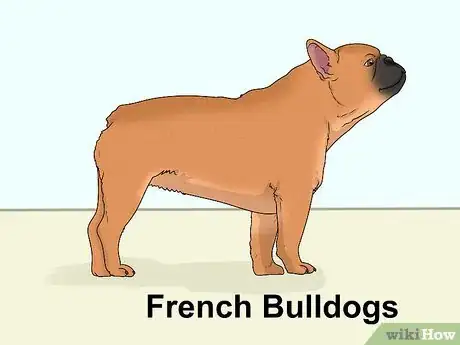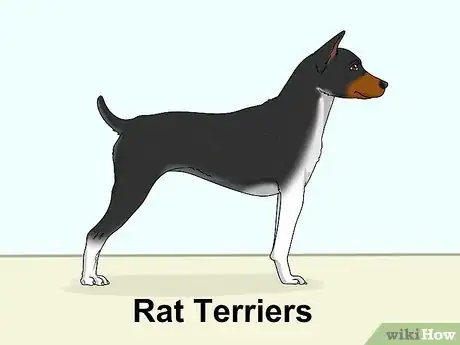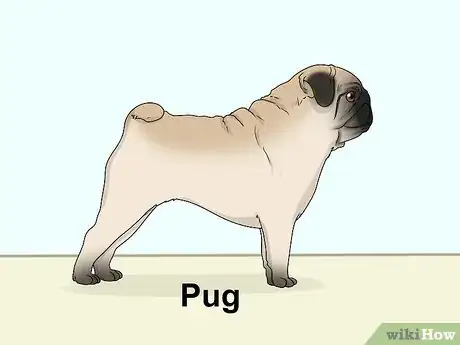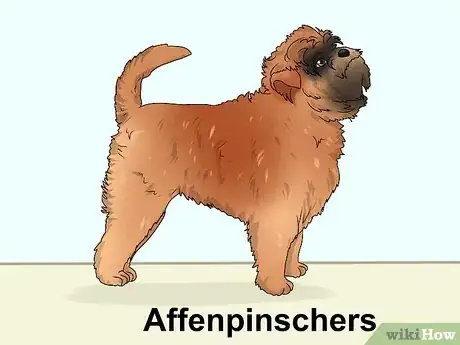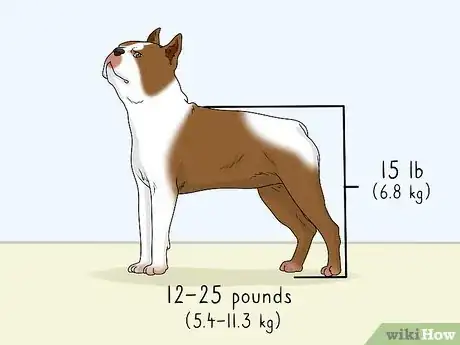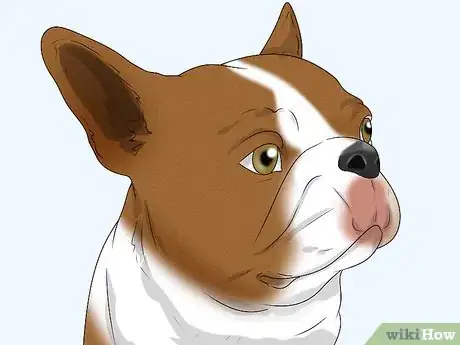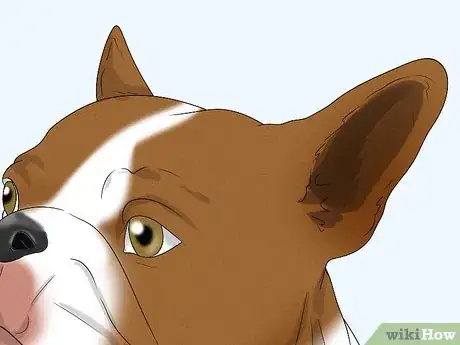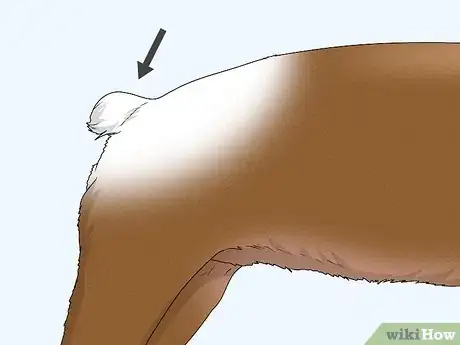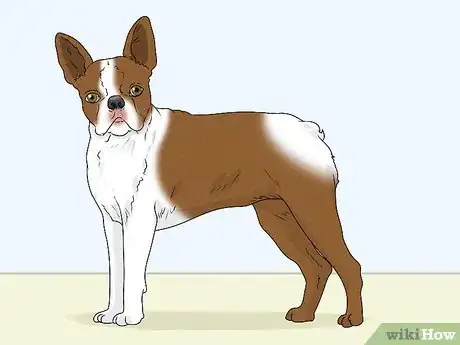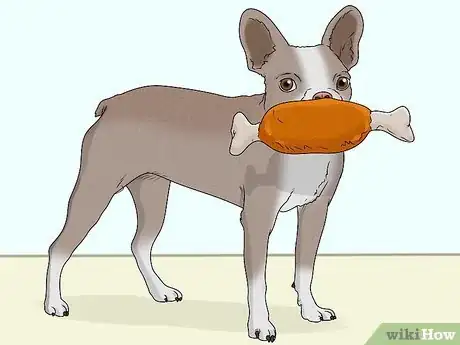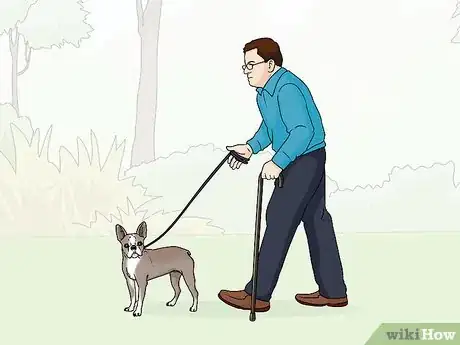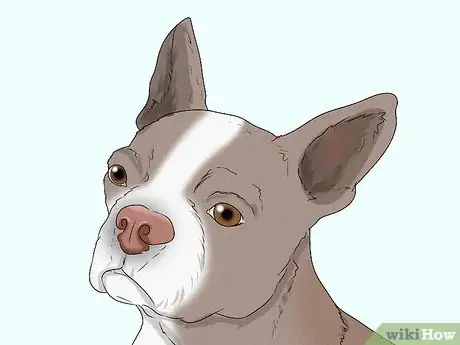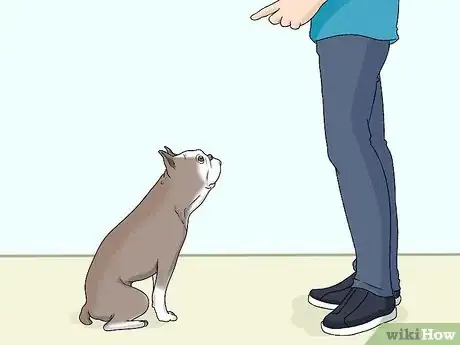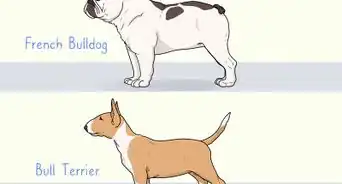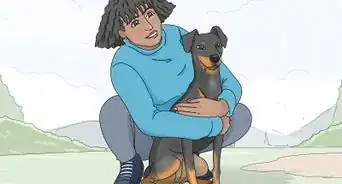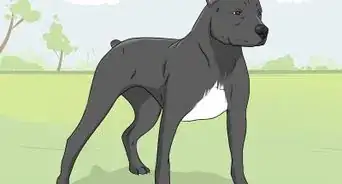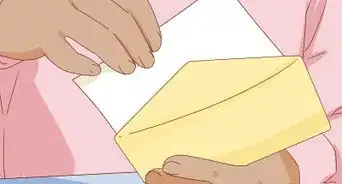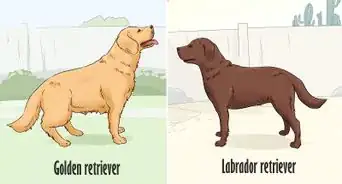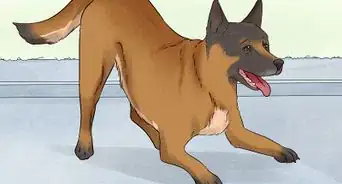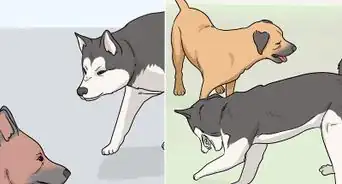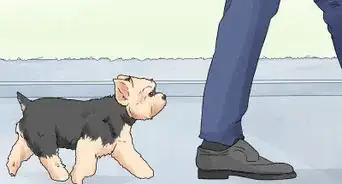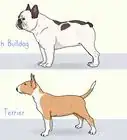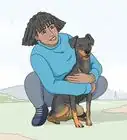This article was co-authored by Belgin Altundag. Belgin Altundag is a Certified Dog Trainer and the Owner of Happy Doggies Day Care/Day Camp in West Hollywood, California. A passionate animal lover, Belgin is knowledgeable about multiple training styles, including obedience training, problem-solving, activity training, and behavior modification. In addition to being an Animal Behavior College’s Certified Dog Trainer (ABCDT), Belgin has also completed the Training Cesar's Way Fundamentals of Dog Behavior and Training Programs 1 and 2 and is certified by the American Red Cross in Cat and Dog First-Aid.
There are 14 references cited in this article, which can be found at the bottom of the page.
This article has been viewed 15,610 times.
The Boston Terrier is an American-developed non-sporting breed.[1] They are small and lively, given the nickname "The American Gentleman".[2] Bostons can be confused with similar breeds, but if you're able to recognize their distinct physical traits and temperament, they can be easier to identify. This wikiHow will help you to identify a Boston Terrier.
Steps
Understanding Differences Between Similar Breeds
There are several breeds that share similar traits with Boston Terriers and may be confused for a Boston. However, by knowing how to differentiate between these breeds, you may be able to get a better idea of whether a dog is a Boston Terrier.
-
1Identify the differences between Boston Terriers and French Bulldogs. The French Bulldog is another flat-faced non-sporting breed. French Bulldogs are smaller than Boston Terriers height-wise, standing at about 11–13 inches (28–33 cm).[3] However, French Bulldogs weigh more than Bostons. Both dogs have erect ears, though the ears of a French Bulldog are more rounded.[4] Common French Bulldog coat colors include white, cream, fawn, brindle, and piebald, and when it comes to temperament, a French Bulldog may be more stubborn and seek attention humorously.[5]
-
2Notice how Boston Terriers and Rat Terriers differ. Rat Terriers are a member of the terrier group and about the same size as Boston Terriers.[6] They are similar in appearance to Bostons but have dense, shiny coats.[7] Their coats come in pied patterns - one or more colors mixed with white,[8] which includes tan, brown, blue, and black.[9] Rat Terriers are extremely protective and are sometimes used for search and rescue.[10]Advertisement
-
3Spot differences between Boston Terriers and Pugs. Pugs are the largest toy breed dogs[11] and are roughly the same size as Boston Terriers. The tell-tale difference between the breeds is that Pugs usually have fawn or solid black coats without white markings,[12] and Pugs have curly tails and folded ears rather than short tails and erect ears.
-
4Know how Boston Terriers and Manchester Terriers differ. Manchester Terriers come in two varieties: standard and toy.[13] Standards are roughly the same size as Bostons,[14] though the toy variety is smaller.[15] Manchesters have fine black and tan coats instead of the white and black, sable, or brindle coat seen on Bostons.[16] Manchester Terriers are spirited and observant.[17]
-
5Differentiate between Boston Terriers and Affenpinschers. The Affenpinscher is a toy breed and much smaller than the Boston Terrier.[18] Unlike Bostons, their coats aren't too short. Affenpinschers have wiry coats[19] which come in several colors,[20] including tan, red, black, and silver. They are affectionate, loyal, and entertaining.[21]
Inspecting the Body Structure
-
1
-
2
-
3Look at the ears. The ears of a Boston should be small and erect. They are situated near the corners of the head and may be either cropped or uncropped (natural).[28]
-
4
-
5
-
6
Examining the Coat
-
1Check the appearance and texture of the coat. Boston Terriers have short coats. Their short fur is fine, smooth, and bright.[36]
-
2
-
3Identify the breed's white markings. Boston Terriers are seen with white markings on their heads and bodies, some of which, however, aren't always present.[39]
- Required white markings on a Boston include a white forechest, blaze between the eyes, and a muzzle band.[40]
- A full white muzzle band, a blaze that continues between the eyes and over the head, a white collar and forechest, and white on the legs are also desired markings, though aren't "required".[41]
Noticing the Temperament
-
1Check for liveliness. Boston Terriers enjoy attention and may love to play. They can make great companions to children who are looking for a playmate.[42]
-
2
-
3See if the dog is sensitive. Bostons are a sensitive breed. It is important to always speak to them in kind voices because they are extra sensitive to your tone.[45]
-
4Watch for intelligence. Boston Terriers are intelligent dogs. They can be quick to understand commands and can learn them quickly with consistency.[46]
-
5Look for resilience. Bostons are resilient and adaptable, though stubborn. Because of this, they can make great pets for people of any age, and they can be trained to tolerate other non-canine pets.[47]
References
- ↑ https://www.akc.org/dog-breeds/boston-terrier/
- ↑ https://www.akc.org/dog-breeds/boston-terrier/
- ↑ https://dogsnet.com/boston-terrier-vs-french-bulldog/
- ↑ https://dogsnet.com/boston-terrier-vs-french-bulldog/
- ↑ https://dogsnet.com/boston-terrier-vs-french-bulldog/
- ↑ https://www.akc.org/dog-breeds/rat-terrier/
- ↑ https://dogell.com/en/compare-dog-breeds/rat-terrier-vs-boston-terrier
- ↑ https://www.akc.org/dog-breeds/rat-terrier/
- ↑ https://dogell.com/en/compare-dog-breeds/rat-terrier-vs-boston-terrier
- ↑ https://dogell.com/en/compare-dog-breeds/rat-terrier-vs-boston-terrier
- ↑ https://pawster.com/pug/
- ↑ https://www.bterrier.com/boston-terriers-vs-pugs-what-is-the-difference/
- ↑ https://www.akc.org/dog-breeds/manchester-terrier-standard/
- ↑ https://www.akc.org/dog-breeds/manchester-terrier-standard/
- ↑ https://www.akc.org/dog-breeds/manchester-terrier-toy/
- ↑ https://dogell.com/en/compare-dog-breeds/manchester-terrier-vs-boston-terrier
- ↑ https://www.akc.org/dog-breeds/manchester-terrier-standard/
- ↑ https://www.akc.org/dog-breeds/affenpinscher/
- ↑ https://dogell.com/en/compare-dog-breeds/boston-terrier-vs-affenpinscher-vs-brussels-griffon
- ↑ https://www.akc.org/dog-breeds/affenpinscher/
- ↑ https://www.akc.org/dog-breeds/affenpinscher/
- ↑ https://www.akc.org/dog-breeds/boston-terrier/
- ↑ http://images.akc.org/pdf/breeds/standards/BostonTerrier.pdf
- ↑ https://www.akc.org/dog-breeds/boston-terrier/
- ↑ http://images.akc.org/pdf/breeds/standards/BostonTerrier.pdf
- ↑ http://images.akc.org/pdf/breeds/standards/BostonTerrier.pdf
- ↑ http://images.akc.org/pdf/breeds/standards/BostonTerrier.pdf
- ↑ http://images.akc.org/pdf/breeds/standards/BostonTerrier.pdf
- ↑ http://images.akc.org/pdf/breeds/standards/BostonTerrier.pdf
- ↑ http://images.akc.org/pdf/breeds/standards/BostonTerrier.pdf
- ↑ http://images.akc.org/pdf/breeds/standards/BostonTerrier.pdf
- ↑ http://images.akc.org/pdf/breeds/standards/BostonTerrier.pdf
- ↑ http://images.akc.org/pdf/breeds/standards/BostonTerrier.pdf
- ↑ http://images.akc.org/pdf/breeds/standards/BostonTerrier.pdf
- ↑ http://images.akc.org/pdf/breeds/standards/BostonTerrier.pdf
- ↑ http://images.akc.org/pdf/breeds/standards/BostonTerrier.pdf
- ↑ https://www.akc.org/about/glossary/
- ↑ http://images.akc.org/pdf/breeds/standards/BostonTerrier.pdf
- ↑ http://images.akc.org/pdf/breeds/standards/BostonTerrier.pdf
- ↑ http://images.akc.org/pdf/breeds/standards/BostonTerrier.pdf
- ↑ http://images.akc.org/pdf/breeds/standards/BostonTerrier.pdf
- ↑ https://www.dogtemperament.com/boston-terrier-temperament/
- ↑ https://www.dogtemperament.com/boston-terrier-temperament/
- ↑ https://www.dogtemperament.com/boston-terrier-temperament/
- ↑ https://www.dogtemperament.com/boston-terrier-temperament/
- ↑ https://www.dogtemperament.com/boston-terrier-temperament/
- ↑ https://www.dogtemperament.com/boston-terrier-temperament/
